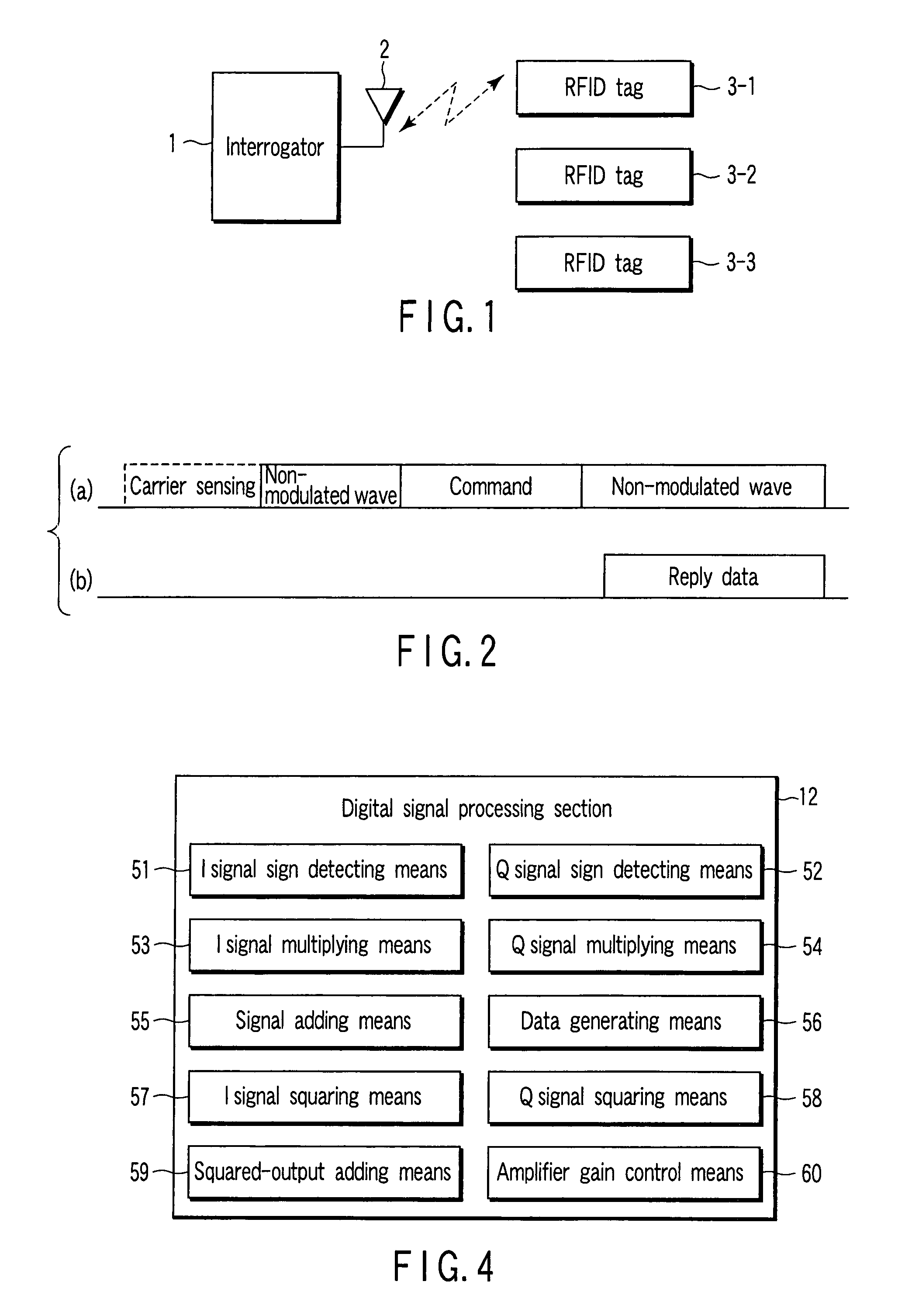Quadrature demodulator and interrogator
a demodulator and quadrilateral technology, applied in the field of quadrilateral demodulator and interrogator, can solve the problems of frequency-occurrence of incorrect reproduction of reception data due to noise, and achieve the effect of reducing the occurrence of incorrect reproduction of reception data and reliability suppressing the influence of nois
- Summary
- Abstract
- Description
- Claims
- Application Information
AI Technical Summary
Benefits of technology
Problems solved by technology
Method used
Image
Examples
first embodiment
[0026]FIG. 1 is a block diagram depicting the schematic configuration of a system including an interrogator and RFID tags that serve as transponders. The interrogator 1 is equipped with an antenna 2. The antenna 2 operates to radiate a high frequency signal as a radio wave at the time of transmission and convert a received radio wave to a high frequency signal at the time of reception.
[0027]The radio wave radiated from the antenna 2 arrives at RFID tags 3-1, 3-2, and 3-3, and the respective RFID tags receive them. The RFID tags 3-1, 3-2, and 3-3 hold identification numbers specific thereto, respectively.
[0028]When the interrogator 1 transmits a signal for interrogation, the RFID tags 3-1, 3-2, and 3-3 perform an operation corresponding to the signal for interrogation. For example, in the case where the signal for interrogation includes data that only designates the identification number for the RFID tag 3-1, a reply is returned only from the RFID tag 3-1, and thus no reply is return...
second embodiment
[0068]While the foregoing first embodiment has described a mode of determining a sign of a signal while comparing an I signal and a Q signal with an offset voltage, the present embodiment describes determining a sign of a signal from data on an I signal and a Q signal, and then, reproducing reception data. Like components operating in the same manner as those of the first embodiment are designated by like reference numerals, and a detailed description thereof is omitted here.
[0069]FIG. 8 is a schematic block diagram depicting the configuration of an interrogator 1. This block diagram is different from that of the first embodiment in that signals Ia and Qa output from second and third LPFs 33 and 34 of a receiving section 17 are not input to a digital signal processing section via DACs 46 and 47.
[0070]A signal Ib from a fourth LPF 35 is converted into a digital signal by a first ADC 41, and then, the converted digital signal is supplied to a digital signal processing section 121. In ...
PUM
 Login to View More
Login to View More Abstract
Description
Claims
Application Information
 Login to View More
Login to View More - R&D
- Intellectual Property
- Life Sciences
- Materials
- Tech Scout
- Unparalleled Data Quality
- Higher Quality Content
- 60% Fewer Hallucinations
Browse by: Latest US Patents, China's latest patents, Technical Efficacy Thesaurus, Application Domain, Technology Topic, Popular Technical Reports.
© 2025 PatSnap. All rights reserved.Legal|Privacy policy|Modern Slavery Act Transparency Statement|Sitemap|About US| Contact US: help@patsnap.com



